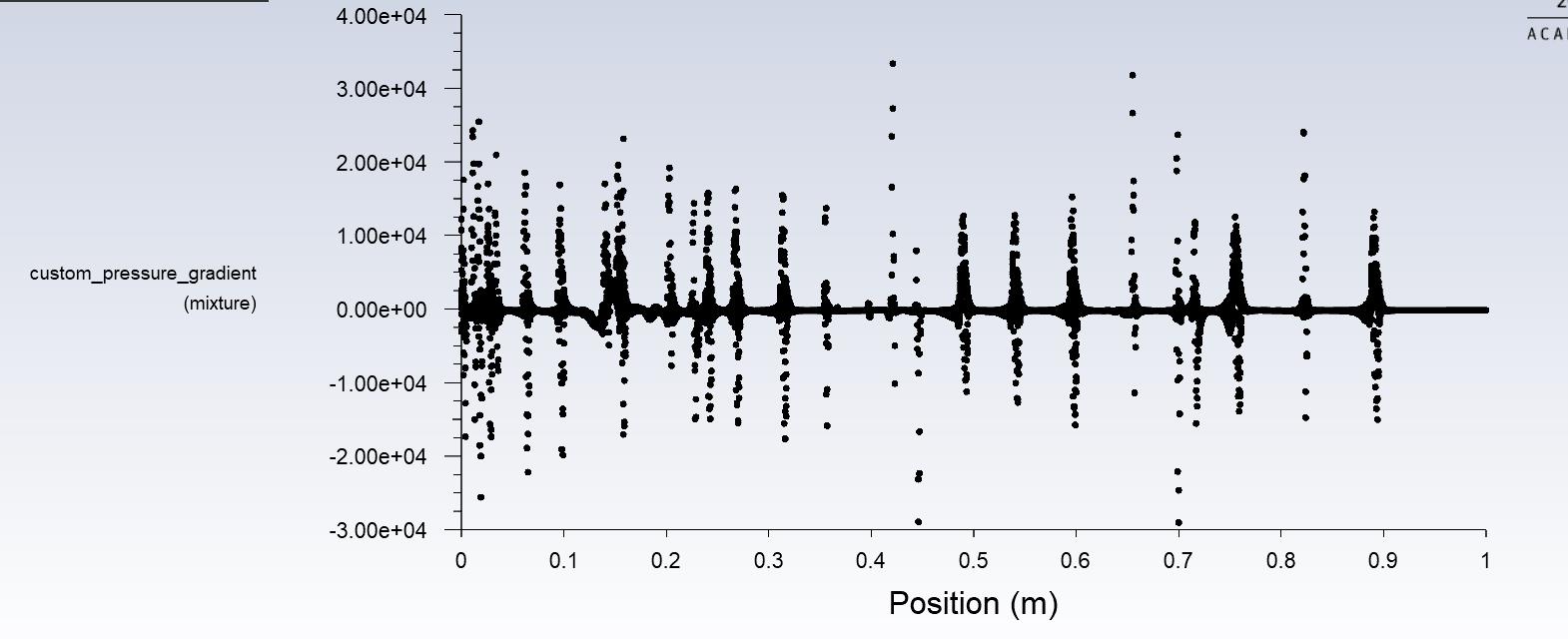-
-
April 27, 2020 at 11:05 am
maggakahn
SubscriberHello everyone.
My aim is to validate my CFD model by comparing the pressure gradient obtained from the simulation to semi-empirical equations derived by others. I have simplified the problem to a 2D-planar case. I am using the VOF model and the pipe has some inlet mass flow for both liquid and gas phases. In addition the pipe is open to the atmosphere at the top, and gravity is imposed over the pipe.
However, I am having trouble trying to find the total pressure gradient in a vertical multiphase pipe flow. Because there is pockets of gas throughout the pipe, the pressure is varying quite a lot (See image below for ref.)
Thank you very much for reading. I am greatful for any comments or recommendations.
Regards,
Magnus
-
April 27, 2020 at 11:58 am
Karthik Remella
AdministratorHello,
You will need to create a custom field function to obtain the value of the pressure gradient. To create this, please use the 'User-Defined' tab. Please see the following screenshot.
Once you have your definition, you should be able to use this function 'pressure_gradient' in your XY plot or contour plot as needed. Please note that the 'P' in the definition 'dP/dx' is the Static Pressure.
Thanks.
Best,
Karthik
-
April 27, 2020 at 12:13 pm
maggakahn
SubscriberHello, Karthik.
Thank you for the quick reply!
However, I have tried to plot the dpdx as you said, and the results are quite messy unfortunately. As you can see from the figure below, the pressure gradient varies a lot. Therefore trying to figure out the real pressure gradient from lets say 0.8-1.0m of the pipe is not easy.

Do you have any other recommendations?
Thanks again,
Magnus
-
April 27, 2020 at 12:17 pm
Karthik Remella
AdministratorHello,
I'd recommend changing the range on your y-axis to see if you can make some sense of your data. You might want to exclude point which are showing these really high or low values. Perhaps, even write out this data so you can inspect these numbers.
Thank you.
Best,
Karthik
-
April 28, 2020 at 8:29 am
maggakahn
SubscriberHello again, and thank you for your help!
By changing the range on the y-axis i can see that the pressure gradient is fluctuating. See the screenshot below for ref. Do you know if there is a reason for why the pressure gradient is fluctuating this much? Or perhaps this is normal for multiphase bubble flow?
I think i need a new method to figure out the pressure gradient for a distance delta L on the pipe. For example from 0.0-1.0 meters. Is there a way to do that in Fluent? Perhaps an averaging method that smooths out the big spikes in dp caused by the air bubbles, or something similar?
Thank you very much for your continued support!
Best regards,
Magnus
-
April 28, 2020 at 11:11 pm
Karthik Remella
AdministratorHello,
Yeah, this might be an issue. Perhaps, it is quite possible that the individual spikes you are seeing are because of the interface location of your air bubbles.
You might need to do some kind of averaging to smooth out these fluctuations.
Are you able to verify if the results you are obtaining from Fluent are right? Or is this an attempt to verify the model results?
Also, it seems like you are plotting dP-dY? Is this your parameter of interest? Or are you looking for grad(P)?
Thank you.
Best Regards,
Karthik
-
May 17, 2020 at 10:44 am
maggakahn
SubscriberHello,
I managed to find the solution to my problem. It turns out that i needed to set the operating density equal to the lightest phase in the simulation, or in my case 0 because the gaseous phase is modelled as compressible.
Thank you for all the help.
Best regards,
Magnus
-
May 18, 2020 at 11:45 am
Karthik Remella
AdministratorHello,
Glad to know that you were able to resolve the issue. Please mark the most appropriate answer as 'Is Solution'. This discussion might help someone who might be encountering a similar issue.
Good luck!
Best,
Karthik
-
- The topic ‘How to find the total pressure gradient for a multiphase (liq-gas) bubble flow in a pipe?’ is closed to new replies.



-
3767
-
1333
-
1173
-
1090
-
1014

© 2025 Copyright ANSYS, Inc. All rights reserved.











